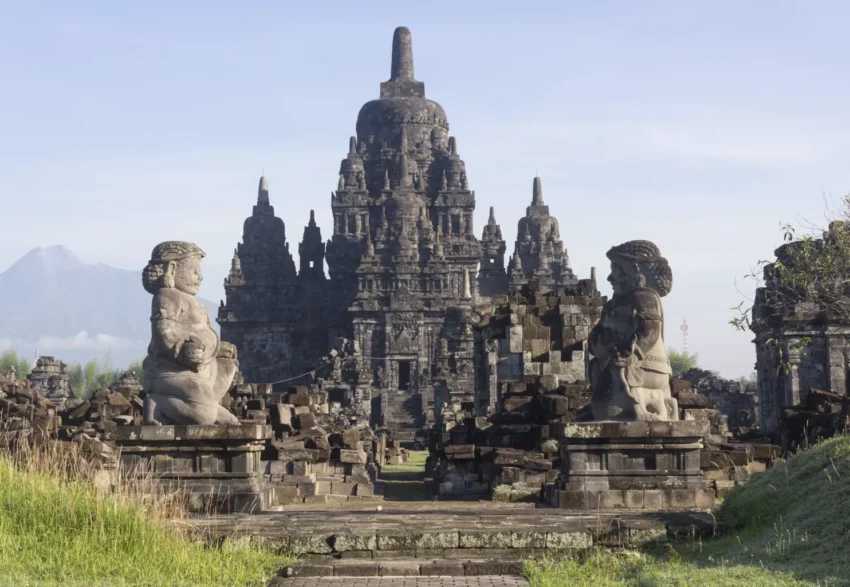The Historical and Archaeological Significance of Candi Sewu Temple
Candi Sewu is an 8th-century Mahayana Buddhist temple located 800 meters north of Prambanan in Central Java, Indonesia. The term “candi” refers to a Hindu or Buddhist temple in Indonesian, thus the name Candi Sewu. It is the second-largest Buddhist temple complex in Indonesia, following Borobudur. The temple complex, originally known as Manjusrigrha, predates the nearby “Loro Jonggrang” temple at Prambanan and consists of 249 temples, though its Javanese name translates to ‘a thousand temples,’ a figure derived from local folklore.
Get your dose of History via Email
Construction and Historical Context
The construction of Candi Sewu was initiated towards the end of the reign of Rakai Panangkaran (746–780 AD), a devoted Mahayana Buddhist king of the Medang Mataram Kingdom. The temple was likely completed during the reign of his successor, King Indra. Historical inscriptions, such as the Kelurak inscription (782 AD) and the Manjusrigrha inscription (792 AD), provide evidence of the temple’s early existence and its original name, Manjusri grha (The House of Manjusri). Manjusri, a Bodhisattva in Mahayana Buddhist teachings, symbolizes transcendent wisdom.
Candi Sewu served as the royal Buddhist temple of the kingdom, hosting significant religious ceremonies. The temple complex, including the main temple and surrounding perwara (guardian) temples, is arranged in a mandala layout, symbolizing the universe in Buddhist cosmology. This layout and the scale of the temple complex suggest its importance as a major religious site during its time.
Rediscovery and Archaeological Studies
The temple complex was buried under volcanic debris from Mount Merapi and was not completely forgotten, thanks to local Javanese folklore and legends. It was rediscovered and reported in the 19th century by various researchers and archaeologists, including Hermann Cornelius and Thomas Stamford Raffles. The first lithographs and descriptions from this period played a crucial role in documenting the temple’s condition before major restoration efforts.
Significant archaeological interventions began in the early 20th century, with efforts led by Theodoor van Erp and others, focusing on clearing, documenting, and attempting to restore the temple complex. Despite these efforts, many original elements, such as Buddha statues and decorative reliefs, were lost or stolen over the centuries.
Contemporary Events and Restoration Efforts
Since the early 20th century, the temple has undergone gradual restoration. The main temple and two of the apit temples were reconstructed and completed in 1993, inaugurated by President Soeharto. However, the 2006 Yogyakarta earthquake caused significant damage, leading to further restoration needs and temporary closures for safety assessments.
Today, Candi Sewu stands as a testament to the architectural and religious history of Central Java. It continues to attract scholars, archaeologists, and tourists interested in its historical significance and its role in the religious landscape of the region. The temple complex also hosts the annual Waisak Day ceremony, marking its ongoing relevance as a site of religious and cultural heritage.
Conclusion
Candi Sewu, with its rich history and complex of temples, remains a crucial site for understanding the spread of Mahayana Buddhism in Java and the architectural prowess of the Medang Mataram Kingdom. Its preservation and study continue to contribute to our understanding of Javanese history and the interplay between Buddhism and the local cultural contexts during the 8th century AD.
Sources:

